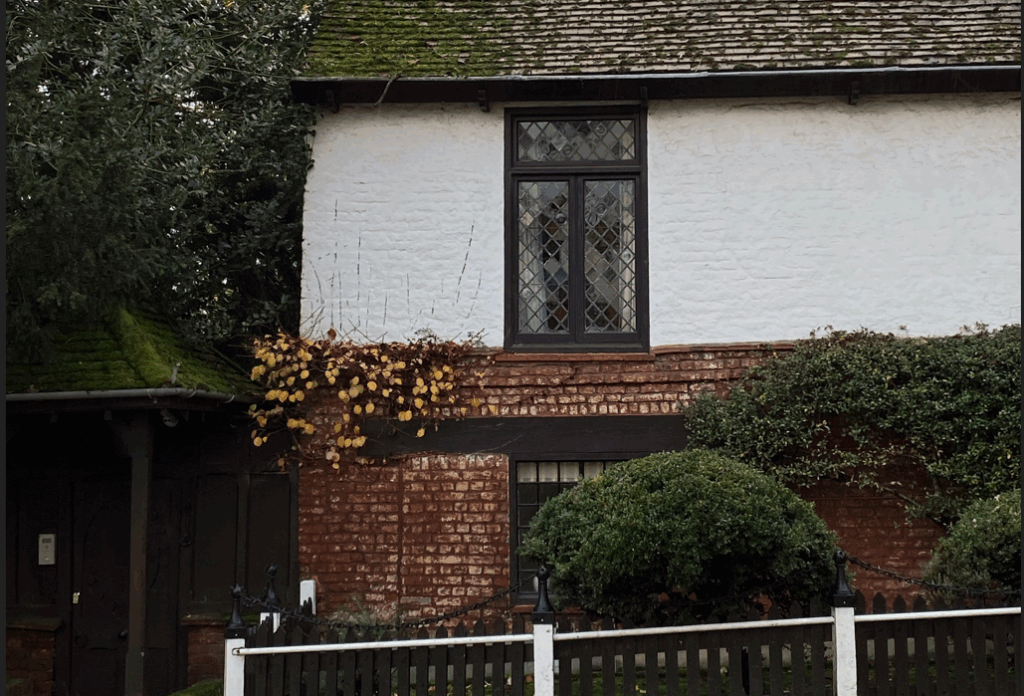
Alternatives to mortgages: what are my options?
What alternatives to mortgages are there for people looking to buy a new home?
Depending on where you are in life, waiting for the ‘perfect’ time to get a mortgage and buy a property isn’t just unrealistic, but unnecessary. With a growing range of alternatives to mortgages available, it’s simply a case of working out what’s right for you.
Today’s article takes you through your ‘alternatives to mortgages’ options, covering off everything from joint-buys with friends and family to guarantor mortgages, help-to-buy loans and shared ownership. The good news is, there’s a lot of choice. So start making sense of alternatives to mortgages now, and make owning your home a reality, more quickly.
How can I get a mortgage, without getting a mortgage?
It’s not a silly question. Despite headline claims in August that UK mortgage lending had reached its highest level since 2008, applying for a mortgage is still far beyond the reach of many, whether it’s a first-time buy or a move up the ladder.
Waiting for that magical moment when life, commitments and finances all align to create the perfect mortgage application isn’t a realistic strategy, and would-be buyers are turning to new, smart alternatives to mortgages, often digitally-driven, and much more in-tune with what the market can afford.
You don’t necessarily need to get a traditional mortgage, to own a home. It’s an exciting prospect, if you know what alternatives to mortgages are out there. This guide takes you through the current popular options, but who knows where we’ll be next year? For now though, let’s look at what might work for you.
1. Jointly buying a house (or flat)
This isn’t really anything new, but it is becoming a more popular strategy. Whether you’re going in with a friend, family, a group of people or something else, you’ll need to decide what type of ownership works best for everybody concerned. There are two options for this.
Joint tenancy
Sometimes referred to as ‘beneficial joint tenants’, you’ll have equal rights to the whole property. If you die whilst in joint ownership, your portion will automatically go to the other owner – you can’t pass this on to anyone in your will.
Tenants in common
In this case, you’d own different shares of the property. The property won’t automatically transfer to the other owners if you die, and you can leave your share to someone in your will.
Both options allow you to change your setup, when necessary. For example, if you’re a joint tenant with your spouse and are going through a divorce, you can become tenants in common, allowing you to leave your share of the property as you wish in your will.
Why is it great?
It’s a flexible option, allowing you to share the financial outlay and change things up depending on your circumstances.
What’s the catch?
Friends and finances need careful blending. Even if you’re going in with your partner, seek impartial advice and get an honest picture of how the whole setup will work, or be worked out, should anything go wrong.
2. Guarantor mortgage
Having trouble getting accepted for a traditional mortgage? One of the most popular alternatives to mortgages is a ‘guarantor mortgage’, especially if you have no or very little deposit, or your financial circumstances or history could scare the bank off.
These types of alternative mortgages are often called ‘family mortgages’ or ‘springboard mortgages’ by lenders, and they do what it says on the tin – often with family giving you a leg up onto the property ladder.
How does a guarantor mortgage work?
First things first, you’ll need to decide who you’re going to ask to be your mortgage guarantor. They’ll be named on the mortgage and will be responsible covering repayments if you can’t, and will be at the risk of losing their own home, if they’re unable to pay. This is because the lender can hold a ‘charge’ on the guarantor’s property, which could be repossessed if you don’t keep up with repayments.
The alternative to this charge would be a lump sum, which your guarantor would put into a savings account, held by the lender. They won’t be able to access their money until an agreed date, or until you’ve paid off an agreed amount of the mortgage.
Will the guarantor be named on the title deeds?
No, and they won’t own any share of the property. They are simply a financial guarantor.
Do I need a deposit with a guarantor mortgage?
No. You can apply for a guarantor mortgage with a 100% ‘loan to value’ (LTV), where the mortgage will cover the entire property purchase price.
Guarantor mortgages tend to be most popular with first time buyers, although some are available for remortgages or house moves. They tend to suit people with no (or very little) deposit, low-income buyers, those without a squeaky-clean credit record, freelancers and self-employed people, and buyers looking to take on a property which, on paper, the lender doesn’t think you can afford.
Can my parents buy me a house?
Whilst it’s not as simple as that, a parent, if accepted by the lender, can absolutely act as guarantor of your property. Remember though that family and finances need to be blended with care, and you’d be smart to get advice before agreeing anything in writing.
Why is it great?
Whether it’s your parents, grandparents or another (very kind) guarantor, this sort of alternative to a mortgage lifts the focus from away from you, your tiny deposit or your poor credit rating, or whatever else the bank may be worried about.
What’s the catch?
Again, there are real risks for the guarantor, should repayments be missed. Be equipped with all the facts, as a group, and have an open line of communication, flagging issues or concerns early on.

3. Help to buy
Going the government route? There are a few options to explore here, starting with the Help to Buy equity loan.
What is the Help to Buy equity loan?
This low-interest loan is available in England and Wales only, and can give you a route to putting down a deposit. You’ll need a 5% deposit in the first place, and the government will lend you up to 20% on top (up to 40% in London). You’ll then need a mortgage up to 75% for the rest (up to 55% in London).
How can I get it?
To be eligible, the property you’re looking to buy must be a new build in the hands of a registered Help to Buy builder, with a purchase price up to £600,000 in England, or £300,000 in Wales. It must be the only property you own, you can’t sub-let or rent it out after purchase, and if you’re buying in Wales, you’ll need to prove you can’t afford it.
Fees apply, and you can get a breakdown of these along with deposit and payment option examples on Gov.uk’s Help to Buy hub. If you’re looking to buy in Wales, check our Homebuy link at the end of the article.
Why is it great?
This equity loan requires just a 5% deposit from you, despite its ‘low interest’ status.
What’s the catch?
There are restrictions, and your experience will largely depend on your Help to Buy builder.
4. Shared ownership
You could also look into buying a home through the shared ownership scheme, which is available across the UK, or buying your council or housing association property. In this case, you’d buy a 25-75% share of a leasehold property, and pay rent on the remainder. Different rules will apply, depending on your area, so make sure you’re following advice from the right authority. We’ve put a list of useful contact details at the end of this article.
How can I get it?
The following criteria apply to shared ownership. Your household must earn £80,000 a year or less (£90,000 in London) and any of the following should apply:
- you don’t own another home
- you’re not able to afford a home suitable for your needs in the open market
- you’re not in mortgage or rent arrears and have good credit
Can I buy more of my shared ownership property?
Yes, once you’re the owner. ‘Staircasing’ is basically a process of buying more shares of the property, and the cost will depend on how much your home is worth, when you’re looking to buy. This will move in line with prices in your area, and your housing association will be responsible for getting your property valued and letting you know the cost of your share. You will, however, have to pay the valuer’s fee.
Why is it great?
This builds a pathway towards home ownership for lots of groups of people, including over 55’s and those with long-term disabilities. You can ‘staircase’ and buy more of the property, but if you decide to sell it before reaching 100% ownership, the housing association has the right to ‘first refusal’.
What’s the catch?
See above for what happens when you come to sell, and remember, your experience will largely depend on your housing association. So do your research and make sure you’re comfortable with how they operate.
5. Affordable shared ownership with the private sector
All of the above are becoming more popular, which has inspired people like StrideUp to provide not just another alternative to a mortgage, but shared ownership that’s designed for today’s buyer. With options like ours, homebuyers can find a property earlier in life (and often with a bigger budget than a traditional mortgage would allow), buy a portion of it and increase their ownership over time.
How does shared ownership work with StrideUp?
A private-sector arrangement with a team like StrideUp means that whilst you’ll need to let us do a few calculations based on you, your finances and where you’re looking to buy, you won’t have to apply separately for another mortgage.
Use our quick enquiry form to get started, and see what you think. You’ll use your own deposit to buy the portion of the property you can afford, and we’ll top this up with our own agreed offer. Over time, you can buy more of the property, increasing your ownership and reducing your monthly payments.
We’re a bit biased, so we won’t add any pros and cons to this one. We’d always recommend getting independent advice, before making any decision about buying a property.




